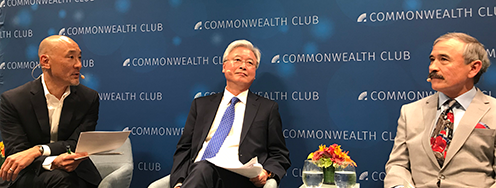A Credible Number, A Needed Debate
There is no official number that tells American citizens how much our government is spending on nuclear weapons. In fact, we are not even precisely sure how many nuclear weapons we have.
What we do know is that we spend way too much on the nuclear arsenal - programs that were designed for the Cold War and that many military leaders and members of Congress from both parties agree no longer meet our needs. As the administration noted in its 2010 Nuclear Posture Review:
“The massive nuclear arsenal we inherited from the Cold War era of bipolar military confrontation is poorly suited to address the challenges posed by suicidal terrorists and unfriendly regimes seeking nuclear weapons.”
To help the public and policymakers make necessary reductions in the nuclear arsenal, Ploughshares Fund calculated - based on the best available public data - a reasonable estimate of what the government spends on nuclear weapons and related programs. The data suggested roughly $54 billion per year, which we projected to grow to approximately $700 billion over the next ten years under current plans.
Here's how we got that number. The most comprehensive estimate of the nuclear weapons budget, for fiscal year (FY) 2008, showed that the Department of Defense spent at least $22.5 billion that year. If that number were to keep pace with projected inflation rates through 2021, the Department of Defense would then spend an estimated $259.7 billion from FY12-FY21 to maintain existing forces.
The Pentagon also plans to procure new nuclear weapons delivery systems - subs, bombers, and cruise missiles - that are not present in the FY2008 estimate. From recent Congressional testimony, we know that the Pentagon says it will spend $125 billion over ten years on nuclear weapons. A portion of these funds are for modernization programs, which we assume will be added to the previously described10-year estimates. We also account for the $88 billion that the Department of Energy says it will spend over the next ten years to improve nuclear warheads and the nuclear weapons complex. A full accounting of our calculations can be found in our Working Paper.
Recently, people who believe that the nuclear budget is actually lower have called our estimate into question. Respectfully, we disagree. We continue to believe that $700 billion in total expenditures over the next decade is the most reasonable reflection of the current planned government spending on nuclear weapons and nuclear weapons-related programs.
Some of the disagreement comes from differences over methodology. Some, for example, don’t believe that our estimate of how much it costs to maintain and operate nuclear weapons is reasonable. They doubt that it could cost more to operate weapons than it would cost to buy them in the first place. In fact, that is often the case.
For example, the new fleet of F-35 fighter jets will cost about $382 billion to buy. But adding in what it takes to operate and maintain these planes brings the lifetime cost of this program to over $1 trillion, according to the Department of Defense.
For the one new nuclear weapon for which the government has provided full cost estimates - the proposed new nuclear-armed submarine - operating the subs over their lifetime will cost twice as much as buying the subs in the first place. “Buying and operating a dozen new nuclear ballistic submarines will cost the Department of Defense $347 billion over the life of the boats, according to a memo signed this month by the Pentagon’s acquisition chief,” reported Inside Defense in February. That is three times the estimated $100 billion the Congressional Budget Office says it will cost to develop and buy the 12 submarines, and five times the $75 billion the Navy claims it will cost.
These disagreements are understandable. Because the government keeps so much of its budget hidden from the public, reasonable people can and will argue over the total costs. We are happy to be having the conversation. In fact, it is an absolutely essential debate.
But it needs to be a transparent debate. It is not acceptable for politicians to push their favorite programs with false, incomplete or misleading cost estimates. It is not acceptable for the government to provide overall figures without explaining what is included in their estimates. Policy makers in these times have to make tough choices about our spending. They need the right information to make the best choices for our nation’s fiscal and national security.
Whether we are spending $500 billion or $700 billion on nuclear weapons in the next decade - the number is still too high. And the longer we debate how much we spend, the more likely it is that everyone - including the U.S. government - will realize that there is no justification any longer for maintaining a nuclear arsenal intended to fight a war that ended 20 years ago.
In a time of austerity, we cannot afford to be spending billions of dollars on weapons that our nation no longer needs. We urge the Administration to release firm figures letting taxpayers know just how much they are spending on nuclear weapons and related programs. But most importantly, we urge Congress to act now to cut the bloated nuclear weapons budget.



